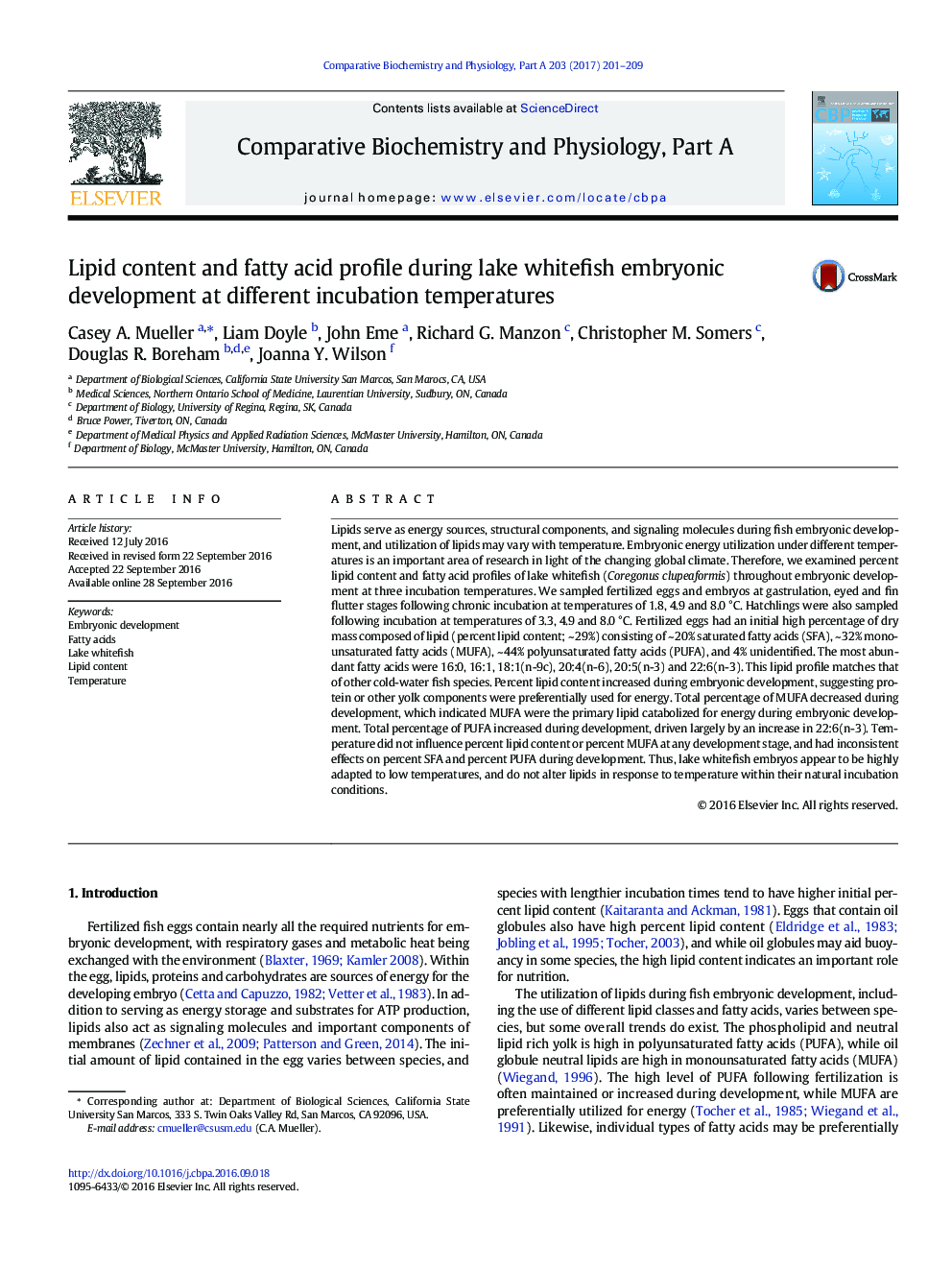| کد مقاله | کد نشریه | سال انتشار | مقاله انگلیسی | نسخه تمام متن |
|---|---|---|---|---|
| 8318400 | 1538984 | 2017 | 9 صفحه PDF | دانلود رایگان |
عنوان انگلیسی مقاله ISI
Lipid content and fatty acid profile during lake whitefish embryonic development at different incubation temperatures
ترجمه فارسی عنوان
محتوای لیپید و پروتئین اسید چرب در طول رشد جنین های دریاچه سیر ماهی در دماهای مختلف انکوباسیون
دانلود مقاله + سفارش ترجمه
دانلود مقاله ISI انگلیسی
رایگان برای ایرانیان
کلمات کلیدی
رشد جنین، اسیدهای چرب، دریاچه سفره ماهی، محتوای لیپید، درجه حرارت،
موضوعات مرتبط
علوم زیستی و بیوفناوری
بیوشیمی، ژنتیک و زیست شناسی مولکولی
زیست شیمی
چکیده انگلیسی
Lipids serve as energy sources, structural components, and signaling molecules during fish embryonic development, and utilization of lipids may vary with temperature. Embryonic energy utilization under different temperatures is an important area of research in light of the changing global climate. Therefore, we examined percent lipid content and fatty acid profiles of lake whitefish (Coregonus clupeaformis) throughout embryonic development at three incubation temperatures. We sampled fertilized eggs and embryos at gastrulation, eyed and fin flutter stages following chronic incubation at temperatures of 1.8, 4.9 and 8.0 °C. Hatchlings were also sampled following incubation at temperatures of 3.3, 4.9 and 8.0 °C. Fertilized eggs had an initial high percentage of dry mass composed of lipid (percent lipid content; ~ 29%) consisting of ~ 20% saturated fatty acids (SFA), ~ 32% monounsaturated fatty acids (MUFA), ~ 44% polyunsaturated fatty acids (PUFA), and 4% unidentified. The most abundant fatty acids were 16:0, 16:1, 18:1(n-9c), 20:4(n-6), 20:5(n-3) and 22:6(n-3). This lipid profile matches that of other cold-water fish species. Percent lipid content increased during embryonic development, suggesting protein or other yolk components were preferentially used for energy. Total percentage of MUFA decreased during development, which indicated MUFA were the primary lipid catabolized for energy during embryonic development. Total percentage of PUFA increased during development, driven largely by an increase in 22:6(n-3). Temperature did not influence percent lipid content or percent MUFA at any development stage, and had inconsistent effects on percent SFA and percent PUFA during development. Thus, lake whitefish embryos appear to be highly adapted to low temperatures, and do not alter lipids in response to temperature within their natural incubation conditions.
ناشر
Database: Elsevier - ScienceDirect (ساینس دایرکت)
Journal: Comparative Biochemistry and Physiology Part A: Molecular & Integrative Physiology - Volume 203, January 2017, Pages 201-209
Journal: Comparative Biochemistry and Physiology Part A: Molecular & Integrative Physiology - Volume 203, January 2017, Pages 201-209
نویسندگان
Casey A. Mueller, Liam Doyle, John Eme, Richard G. Manzon, Christopher M. Somers, Douglas R. Boreham, Joanna Y. Wilson,
